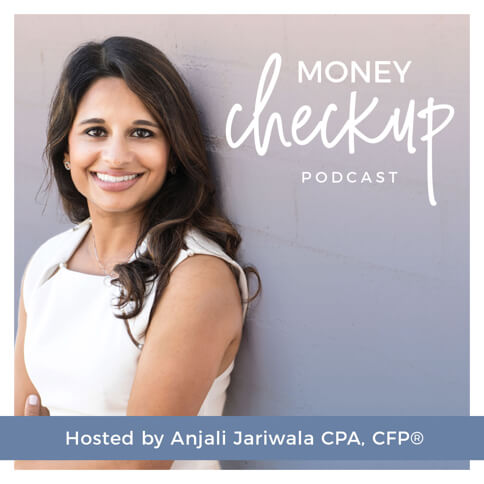In 2015, the Consumer Financial Protection Bureau began requiring mortgage lenders to create loan estimates for homebuyers. These three-page documents outline the terms of a buyer’s mortgage, the fees lenders and other parties charge, and how much buyers should expect to pay each month over the life of the loan.
US Bank loan officer Christina Razzi (NMLS# 162739) recently walked me through a loan estimate line by line on an episode of Money Checkup. Here, we’ll do the same — detailing what each term means, which fees are set by banks and which aren’t, and what you should make sure to ask your loan officer or financial advisor about.
What is a loan estimate?
After you apply for a mortgage, your lender will share a three-page loan estimate with you within three days. This document provides all kinds of detail about your mortgage, from your interest rate to your projected closing costs.
The federal government requires loan estimates, so all lenders use the same document. That makes it easier to understand what you’re looking at and to compare multiple lenders.
That said, only a handful of the numbers on your loan estimate are determined by your lender. Others — like taxes and insurance, estimated title fees, and transfer taxes — are determined by local governments or title and escrow companies.
Lastly, note that most numbers on a loan estimate are not set in stone until the mortgage is finalized. Some of the numbers may change before closing since the lender will get more accurate information as you continue through underwriting.
Here is a sample loan estimate that you can use to follow along as we walk through each line: https://www.consumerfinance.gov/owning-a-home/loan-estimate
Loan details
At the top of your loan estimate, you’ll find some basic details: The name of the lender, the property’s address, and the price you and the seller have agreed to in your contract.
Loan term: This is the number of years the mortgage will last. 30- and 15-year mortgages are most common.
Product: This refers to the type of loan you are receiving. The most common loan product is a 30-year fixed-rate mortgage, which is a loan with a fixed interest rate. The borrower will pay the same amount every month for the next 30 years.
An ARM is an adjustable-rate mortgage. Typically these are expressed as two numbers, such as a “10/1 ARM.” The first number refers to the number of years the rate is fixed — in this case, 10 — and the second number is how frequently the rate will be adjusted in the future. (ARM loan estimates look slightly different from fixed-rate loan estimates. Click here to see the CFPB’s example of an ARM.)
The interest rate on a 10/1 ARM would be adjustable every year, beginning in the eleventh year of the loan.
Rate lock: If the “yes” box is checked, it means the lender has promised that you will receive that interest rate. If “no” is checked, the interest rate may or may not turn out to be the rate quoted on the loan estimate.
Loan amount: This is the amount of money you are borrowing from the lender.
Prepayment penalties and balloon payments: Both of these are fairly rare in mortgages today. If either of these says “yes,” talk to your loan officer and your financial advisor to make sure you understand the provisions.
Projected payments
Principal and interest is the total payment you will make to your lender each month, not including property taxes and mortgage insurance. If your loan’s interest rate is fixed, this amount will never change, regardless of inflation.
On ARMs, this section is divided into several columns. The first column lists the monthly principal and interest payment for as long as the mortgage rate is fixed — 10 years in our initial example. For the years after that, you’ll see a range of projected payments, from the smallest your payment could be to the largest it could be. Because the lender doesn’t yet know what your interest rate will be in year 11, they can only share a range, not a precise figure.
Mortgage insurance: If your lender requires mortgage insurance, your estimated premium will appear here.
Estimated escrow: This is your property tax and insurance payment. In some states, you can get a better interest rate if you bundle your taxes and insurance with your mortgage. But in California and some other states, most homebuyers choose to make tax payments on their own. Talk to your loan officer about what is standard in your state.
On the third page of your loan estimate, you’ll find a chart that shows where you’ll be in five years if you make your mortgage payment each month. Because of the way most mortgages are structured, you will most likely spend more on interest than on your principal in the first five years. Still, this can give you a sense of how much equity you will build during your first five years in the home.
Costs at closing
Estimated closing costs is a ballpark figure that combines all of the fees you will have to pay when you close. Loan costs are fees you pay to the lender and title company. Other costs include escrow fees, interest due at closing, and some other charges. A lender credit will offset your closing costs.
This number will change throughout your loan application process as more details of the purchase are finalized. In general, though, banks overestimate these costs.
Estimated cash to close is the amount of cash you will need to transfer on closing day, between your down payment and your closing costs.
Details of your closing costs
Beginning at the top of the second page of your loan estimate, you’ll see a breakdown of those closing costs.
Most banks charge a loan origination fee, which can range from around $875 to $1,500. Lender credits can offset these fees.
Some banks will reduce your interest rate if you pay more up front using what are known as “points” or “discount points.” Most U.S. buyers don’t buy points, because they don’t make a significant difference in interest rates, but occasionally buying points can be a good idea. Again, your loan officer and financial advisor can walk you through the relevant details.
Services you cannot shop for are fees charged by service providers, like appraisers, who are chosen by the lender.
The fees in Sections A and B are all set by the lender. These are the numbers you can compare across lenders to find out which product is most affordable.
Services you can shop for include a variety of services that are required by the lender, but that you get to shop for yourself. This includes pest inspections, title fees, and more. Note, however, that the seller typically picks the title company, so the buyer is subject to whatever fees that company charges.
The figures in Section C are estimates, but the lender does not actually have control over these costs.
In Section E, you’ll see other costs, including recording fees and transfer taxes. These fees are established by local or state governments, and in some states, the seller pays them. Your contract should specify who is paying which fees.
Section F contains a list of the things you must pay for up front. For instance, you will have to purchase six months of homeowners insurance before closing.
Prepaid interest is the interest owed to the bank for the first fraction of a month after your closing date. Although you won’t owe a mortgage payment for more than a month after closing, the loan begins accruing interest immediately, and the buyer has to pay some of it immediately
Section G lists the initial escrow payment at closing. If you are escrowing for insurance or taxes, you will see a number here. This varies widely by state.
Lastly, Owner’s Title Policy is an extra type of insurance on your title that protects you in case of certain losses. Christina has only seen this used once. In that case, a buyer purchased a home that had a $50,000 home equity line of credit on it, but the title company was not aware of it. The HELOC lender asked the homebuyer to cover it. Fortunately, the title policy protected that buyer and covered the cost.
This too varies widely from state to state. In Illinois, the owner pays for this; in California, it’s optional. Again, talk to your loan officer and financial advisor about what would be best for your situation.
Altogether, these numbers add up to give you a sense of how much cash you will need to bring with you on closing day.
Other details
On the final page, you will see the explanation of how much interest you will pay over the first five years of your mortgage.
APR, or annual percentage rate, is a measure of the total amount you pay to borrow money, including both interest and fees. It is typically slightly higher than your interest rate because it includes all of the closing costs that appeared on page 2.
In Christina’s opinion, APR is “a little antiquated” as a measure, because it considers fees that banks don’t have control over. But it can still be helpful in understanding how much your loan costs in total.
TIP, or total interest percentage, is how much interest you will pay over the life of your loan. If you keep your home for 30 years, more than half of the money you spend on your mortgage payments will probably go to interest rather than principal.
This may seem hard to wrap your head around. But keep in mind that most people do not stay in their homes for 30 years, so you will probably not make all 360 payments on your mortgage. You will also build equity in the home during that time.
What to know when shopping for a loan
To compare lenders while shopping for a mortgage, ask to see Sections A and B of a lender’s loan estimate. These numbers should be easy for banks to provide, and they’ll give you all the information you need to compare lenders.
Christina has worked in the mortgage business for two decades because she loves helping her clients, and she says her colleagues feel the same way. Loan officers are meant to help you through the homebuying process. Feel free to ask your loan officer whatever questions you have about your loan estimate — they’ll be ready and eager to answer.




